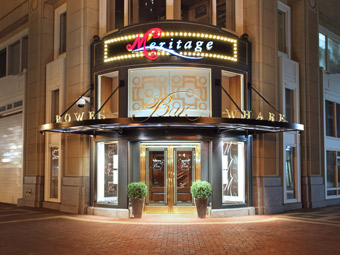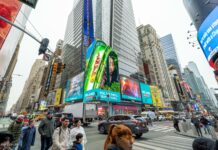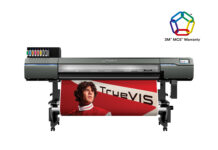 In a city as busy and congested as Boston, making any of its businesses stand out can be difficult. But it’s a challenge Metro Sign & Awning has risen to meet time and time again.
In a city as busy and congested as Boston, making any of its businesses stand out can be difficult. But it’s a challenge Metro Sign & Awning has risen to meet time and time again.
Most recently, Metro used its skills to fabricate and install signage that would bring greater visibility to The Boston Harbor Hotel’s Meritage and Sea Grille restaurants.
Established in 2004, Metro Sign & Awning has grown significantly over the past eight years. “[We] started with eight employees with little sign industry experience but lots of moxie,” says President Brian Chipman. “Today [our company] has twenty-four full-time employees with ample sign industry and other experience and even more moxie.”
And it’s that moxie that enabled the company to handle all of the elements of The Boston Harbor Hotel project.
Metro Sign & Awning was brought onboard by Sousa Design & Architecture, whom the sign company has worked with before. The goal was to make the most of the harbor, pedestrian, and street traffic surrounding the hotel with eye-catching signage. “It’s an investment in the marketing power of signage,” says Metro Business Development Manager Elena Berry. “A lot of people don’t even think about that.”
A variety of signs were planned, including vinyl banners; a curved, two-part identity sign for Meritage; and a variety of illuminated identity signs for Sea Grille.
Metro began by retooling the architect’s designs to make them more functional. “You want to capture the essence of who the business owner is and what they’re trying to market while also making the sign function,” says Berry. “We worked with both Stephen Sousa and Jonathan Crellin of The Boston Harbor Hotel to review color schemes, materials, support brackets, vinyl selection, illumination, size, and approach of fabrication.”
When the designs were finalized, Metro began the engineering and extensive permitting process. But the hotel didn’t want to wait that long—it needed new signs to capitalize on the busy summer months.
Banners

Metro’s solution was to first put up banners, which didn’t require a permit. The company fabricated and installed five banners—three for Sea Grille restaurant and two for Meritage. The banners were made from Sunbrella® 4604 Natural material and hand-painted for a custom look.
Metro also fabricated custom collars and brackets, which were used to attach the banners to the light poles along the harbor. They painted the hardware with Benjamin Moore® Pacific Sea Teal paint.
Meritage Curved Pan Sign
Aside from the lengthy permit process, color matching was another hurdle to getting the signs approved. Part of the challenge was to match specific Pantone® colors that were picked by the client for the banners. These colors were also used for the sign cabinets and then ultimately for the illuminated elements.
This proved a task, considering the color shade shifts that can occur during day/night reflection of translucent colors. This was especially true on the channel letter faces of the curved pan sign for Meritage, which is aimed at drawing in pedestrians from the front of the hotel.
Metro considered both painting and digitally printing the vinyl faces but ultimately settled on solid-color vinyl for longevity and cost efficiency. They presented the architects with an illuminated box holding different types of Plexiglas® variations and translucent colored vinyl samples, which (when not available with their in-house inventories) were provided by the accommodating vinyl manufactures.
The architect compared the illuminated and non-illuminated color samples to the PMS brand colors. “Our goal was to try to keep the non-illuminated and illuminated versions as close as possible to the banners and dimensional letters on site for brand consistency,” says Metro Lead Fabricator John McNally.
Metro and the architects settled on ORACAL® 8800 #030 Dark Red translucent vinyl, as well as 3M™ 3630 Slate Grey and 3M #317 Evening Blue vinyl.

With the colors approved, Metro Sign & Awning began fabrication. The site where the sign would be placed was a curved façade, so the first step was to properly capture the radius of the building.
While conducting their site survey, Metro’s fabricators made a template with notched aluminum angle connected with .080 aluminum strips, which were fastened to the building with screws. They added three-foot-long strips of aluminum to secure the radius.
Metro then created the frame of the sign from one-by-one-inch aluminum square tubes connected in multiple frames to create a three-inch-deep pan. It was rolled on an awning tube roller to the correct radius, welded together, and then cladded with aluminum.
An aluminum tray was fabricated around the perimeter for marquee bulbs. Samsung LED Warm White modules housed in faceted crystal bulb fixtures were daisy-chain linked in the tray. The sockets are rubber encapsulated and waterproof, which is necessary for an outdoor application.
Channel letters spelling “Meritage” were also fabricated for the sign from .040 aluminum returns, .060 aluminum backs, and 3/16-inch white Plexiglas faces with colored vinyl overlays. The “M-e-r” letters and their swoosh element were fabricated as one piece to maximize rigidity in the delicate design.
The letters are illuminated with International Light Technologies (ILT) LED modules and were attached to the sign with 1/4-inch-thick stainless steel rods and standoffs, which range in height to account for the curve and keep the letters flush.
Meritage Canopy Sign
The second part of the Meritage sign sits below the pan sign and is a curved canopy structure featuring dimensional letters and LED up-lighting. Metro used the same radius measurement for the canopy with an additional measurement taken six feet out from the building for the second channel.
Originally the canopy was to include glass coverings in the open sections; but due to cost and weather concerns, this idea was scrapped in favor of leaving the spaces open.
Metro fabricated the frame’s channels from aluminum. The front bar was constructed from 1½-by-6-inch aluminum C-channel, and the rest of the frame was made from 3½-by-6-inch aluminum I-beam.

Using hydraulic rollers, the frame was bent to the specific radii. It was cut and notched using horizontal and vertical band saws and welded. Next it was sent to the paint booth and sprayed with Metal Lok primer before being finished with Akzo Nobel black paint.
The dimensional letters that sit on the outer channel are round-faced, custom cast aluminum. They were gold-leafed and then clear-coated for longevity.
“The difficulty our fabrication and install crews faced here had to do with the support of the letters to the canopy structure while considering the wind load factors of the waterfront and still making the signage aesthetically pleasing,” says Metro Fabricator Ian Alder. “The letters are mounted to a flat bar using brackets and supports that are inconspicuous.”
Accent LED lighting from ILT was used to illuminate the letters, while about 134 feet of ILT exterior silicone-encapsulated 12-volt, white LED flex lighting accents the channels along the structure. Seven 12-volt, white LED flood/down lights from Advance Lighting were also drilled/tapped into the frame to dramatically illuminate the entrance.
Installation
Installation of the two-part Meritage Sign took place early on a Saturday morning so as to not disturb hotel guests. Boston required sidewalk permits and a police detail to ensure pedestrian safety. Metro used its sixty-five-foot crane to hoist the signage pieces and a bucket truck to lag and thru-bolt the sign into place.
But installers ran into a challenge with the canopy. “The canopy install was more challenging due to limited access and a solid wall on the side sections,” say Metro Project Coordinator Mike Baldasarre and Metro Fabricator/Installer Glenn Stetzler. “Our installers had to re-route power to the center legs and use lags in those specific locations.”
It took four installers about twenty man-hours split over two days to install the signage and window graphic treatment.
Other Signs
Metro Sign & Awning also created two signs promoting the Sea Grille restaurant. An illuminated sign cabinet at the back of the hotel attracts the harbor traffic and was created from 1½–inch aluminum angle with .090 aluminum sides.
A MultiCam 3000 Series CNC router was used to cut 1/2-inch push-thru acrylic faces for the graphics. Blue Avery 3005C/A9561 translucent vinyl was laid over the faces, and green and blue AkzoNobel paint was used to paint the cabinet and dimensional letters spelling “Rowe Wharf.” ILT-2×2 LED modules light the cabinet, which was thru-bolted to the building with toggle bolts.
An aluminum blade sign for Sea Grille was added to the front of the hotel to draw in pedestrians. A MultiCam router cut out the clear, acrylic, push-thru letters, which were overlaid with green and blue Avery 321C/VC900-619-T and Avery 3005C/A9561 translucent vinyls. The cabinet was painted with AkzoNobel paint and illuminated by ILT-2×2 LED modules.
The sign was mounted to the building with 1/2-inch stainless steel threaded rod and epoxy through two arm brackets with fabricated aluminum bracket covers painted to match the building.
The final signage element was a set of five-inch-thick acrylic dimensional letters spelling “Meritage,” which were mounted with one-inch spacers to a rear hotel entrance. They were painted with red and blue AkzoNobel paints to keep consistent with the five-star hotel’s branding colors.
All of the new signage has not only brought exposure to The Boston Harbor Hotel, but to Metro as well. Not only has another Boston construction firm brought Metro onto a job, but the hotel has asked them to create another sign for Sea Grille. “It’s a beautiful job that our team is proud to have been a part of,” says Berry.
For additional photos, check out this slideshow:
{2j_imageviewer 34}
By Ashley Bray
All photos courtesy of Metro Sign & Awning.











